Educational Insights Soundtooning Product Instructions
- Category
- Skill games
- Type
- Product Instructions

© 2006 Educational Insights
, Inc., 18730 S. Wilmington Ave., Rancho Dominguez, CA 90220 (USA).
All rights reserved.
Colors and parts may vary. Conforms to ASTM F 963. Made in China. Please retain this information.
CUST
OMER SERVICE
:
(800) 995-4436 Monday-Friday
OR VISIT OUR WEBSITE: www.educationalinsights.com
The following vocabulary words are used in the game.
1. pin wheel pinwheel
2. star fish starfish
3. butter fly butterfly
4. cow boy cowboy
5. egg shell eggshell
6. lady bug ladybug
7. skate board skateboard
8. sun flower sunflower
9. coffee pot coffeepot
10. nut cracker nutcracker
11. light house lighthouse
12. wheel chair wheelchair
13. bird house birdhouse
14. candy cane candy cane
15. jelly beans jelly beans
16. cup cake cupcake
17. horse shoe horseshoe
18. rain coat raincoat
19. pan cake pancake
20. basket ball basketball
®
Rules of Play
Contents
40 puzzle pieces
60-word vocabulary list
20 word cards
Introduction
Before playing the game encourage players to look at both
sides of the puzzle pieces. Talk about the objects to familiarize
players with the vocabulary and ask probing questions to
make sure they understand new vocabulary.
Probing Questions
Can you name this?
How do you use this?
Where would you find this?
Can you tell me a story about this?
Players develop the ability to listen to words, syllables, and sounds while
playing Soundtooning. Understanding that words are comprised of
syllables and sounds contributes to early reading success.
Learning Goal
EI-3153Ages 4+/Grades Pre-K+

No Sneaking a Peek! 2 or more players
A paper bag will be needed for this game. Place one half of each
of the puzzle pairs into the paper bag. Place the other half on a
table in front of the players with the yellow side facing up. The
first player chooses a puzzle piece from the bag and tries to match
it to a puzzle piece on the table. If the player is successful, he may
take the matched pair. If he is unable to make a match, he must
return the puzzle piece to the bag, and play proceeds with the
next player. When all the puzzle pieces have been matched, the
player with the most matches wins the game.
R
ationale
Players are required to manipulate word parts by combining
them to form a larger word. This game helps early readers
understand that smaller units of speech can be blended into
larger units.
Mates 1 or more players
Separate the puzzle pieces and arrange them randomly with the
yellow sides facing up. Players take turns connecting two pictures
that go together. Encourage players to say the names of their
matches out loud while simultaneously using their index finger
to touch the picture they are naming. Next, each player turns over
the completed match and names the picture. The game ends
when all the puzzle pieces have been matched.
Variation
Mates can also be played by setting up the puzzle pieces on the
blue side. Players look for both halves of one pair. When the
completed matches are flipped over, they reveal pictures representing
each word part.
Rationale
Children learn to manipulate and listen to word parts as they
develop their awareness of syllables in words.
Match It- Say It 2 or more players
Connect each of the puzzle pairs and arrange them with the blue
side facing up. Each player takes ten puzzle pairs. Next, players
separate the puzzle pairs by placing one half of each pair on the
table and scrambling them. On the word “go” players quickly
take the pictures from the table which match their puzzle
pieces. The first player who completes his matches and shouts
“Soundtooning” is the winner.
Variation
Word cards are used for this activity. When the picture halves
are completed, players match the word cards to the pictures.
R
ationale
Print awareness is an important component of learning to
read. Players learn to associate the object names with their
printed symbols.
Odd One Out 2 or more players
The game leader (an adult or older child) connects all the puzzle
pairs and arranges them with the yellow sides facing up. The
leader identifies a puzzle, for example the sunflower. The leader
says, “Say sunflower.” After the player responds, the leader says,
“Repeat it again, but this time don’t say sun.” The player
responds with “flower,” keeps that puzzle piece, and places the
sun piece in a discard pile. Play continues until all puzzle pairs
have been separated.
Variation
Players can achieve a more challenging level of play by taking
turns being the leader.
Rationale
Players who perform these activities are more likely to learn how
words are segmented and blended for reading and spelling.
-
 1
1
-
 2
2
Educational Insights Soundtooning Product Instructions
- Category
- Skill games
- Type
- Product Instructions
Ask a question and I''ll find the answer in the document
Finding information in a document is now easier with AI
Related papers
-
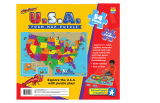 Educational Insights U.S.A. Foam Map Puzzle Product Instructions
Educational Insights U.S.A. Foam Map Puzzle Product Instructions
-
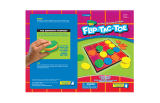 Educational Insights Flip Tac Toe Product Instructions
Educational Insights Flip Tac Toe Product Instructions
-
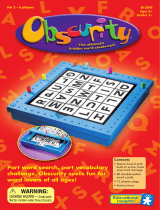 Educational Insights Obscurity Product Instructions
Educational Insights Obscurity Product Instructions
-
 Educational Insights Rattled Product Instructions
Educational Insights Rattled Product Instructions
-
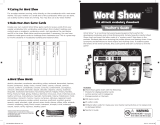 Educational Insights Word Show Product Instructions
Educational Insights Word Show Product Instructions
-
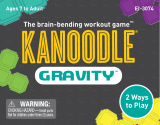 Educational Insights Kanoodle® Gravity™ Product Instructions
Educational Insights Kanoodle® Gravity™ Product Instructions
-
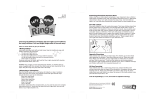 Educational Insights Left and Right Rings Product Instructions
Educational Insights Left and Right Rings Product Instructions
-
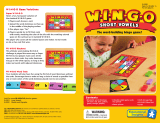 Educational Insights W-I-N-G-O Short Vowel Product Instructions
Educational Insights W-I-N-G-O Short Vowel Product Instructions
-
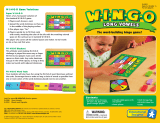 Educational Insights W-I-N-G-O Long Vowel Product Instructions
Educational Insights W-I-N-G-O Long Vowel Product Instructions
-
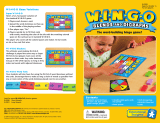 Educational Insights W-I-N-G-O Short Vowel Product Instructions
Educational Insights W-I-N-G-O Short Vowel Product Instructions
Other documents
-
Hasbro T.H.I.N.G.S. EGGZILLA Operating instructions
-
Hasbro My Little Ladybug Operating instructions
-
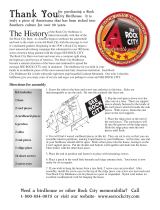 Rock City Gardens 1 Operating instructions
Rock City Gardens 1 Operating instructions
-
VTech V.Smile Motion: Scooby Doo User manual
-
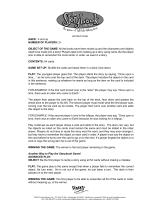 Fundex Games The Storybook Game User manual
Fundex Games The Storybook Game User manual
-
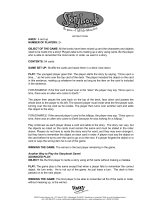 Fundex Games The Storybook Game User manual
Fundex Games The Storybook Game User manual
-
VTech Tablet Notebook User manual
-
VTech Ultra Power Mouse User manual
-
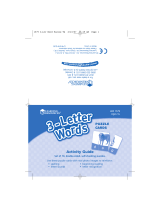 Learning Resources 3-Letter Words LER 1579 User manual
Learning Resources 3-Letter Words LER 1579 User manual
-
VTech Talking Whiz Kid Power Mouse Deluxe User manual















